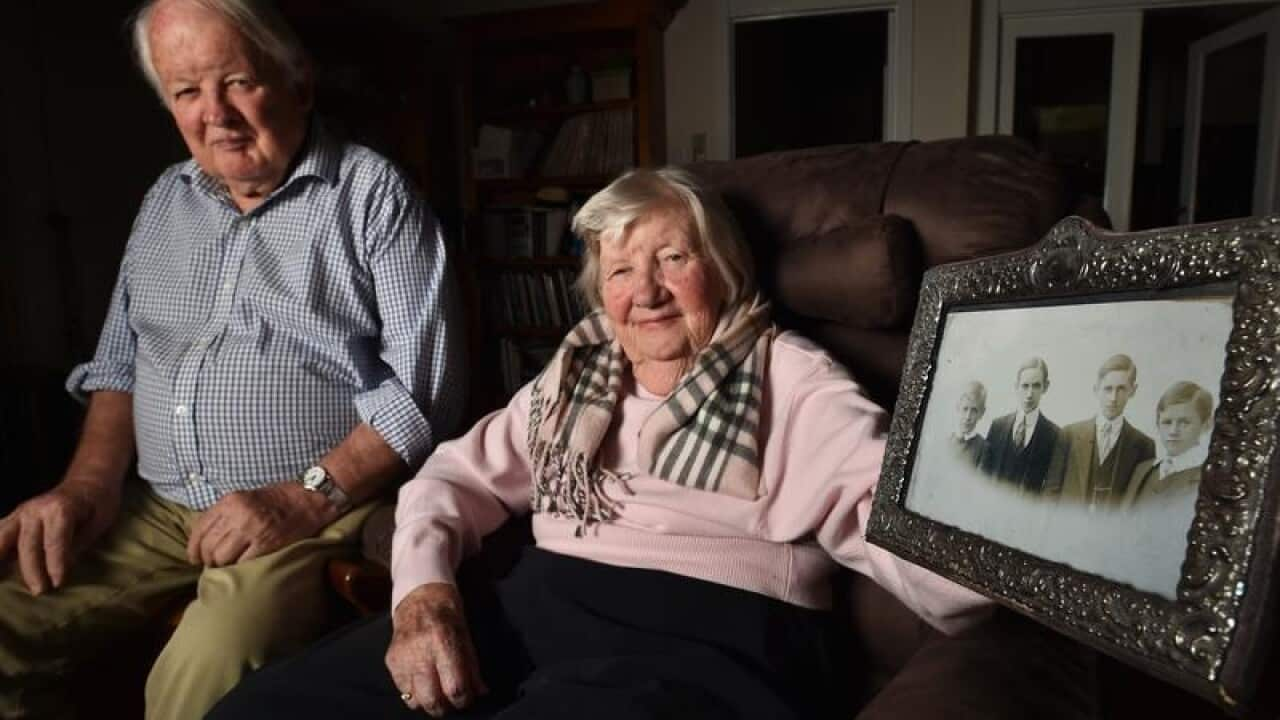When Len Johnson learned his brother was headed for the front lines at Fromelles, he warned his fellow soldier: "Don't go. It's hell."
Lance Corporal Ralph Johnson, who apparently upped his age to go to war, replied: "I have to as that's where my men are."
Soon after the brothers' chance encounter in France during World War I and only three days after his 31st Battalion entered the front-line trenches, Lance Corporal Johnson followed his men into hell.
"Apparently he only virtually got there and they shot him up into the front line," nephew and namesake Ralph Johnson said.
"He didn't last long."
The July 1916 attack on Fromelles, the first major battle fought by Australian troops on the Western Front, was a disaster.
The Australians suffered 5533 casualties, including 1917 dead and 470 taken prisoner, in what remains the worst 24 hours in the country's military history.
Back home in Victoria, Hubert and Alice Johnson learned one of three sons serving in France was missing after the battle of Fromelles while a second was wounded on another battlefield.
Margaret Conway, whose father Frederick was wounded in the arm, believed the initial information that reached her grandmother was limited.
"They had a message or letter saying that one was missing - which was Ralph - or he was taken a prisoner, and the other one had been injured.
"So she didn't know which one."
The official report of the death in action of the youngest of her five children devastated Alice Johnson.
She was so distraught she destroyed almost all photographs of him, either tearing them up or burning them, and threw out his clothes and belongings.
"It's all very sad," Ms Conway said as she and her brother Ralph Johnson recounted the story 103 years later.
"They tried and tried to find out what happened, but nothing really came through."
In late 1919, Hubert Johnson received a letter from a former German soldier who claimed he was with Lance Corporal Johnson when he died on July 19, 1916, and knew where the prisoner of war was buried.
"He died for his country and honour to his memory," a translation of Johann Fischer's letter read.
"I found him still breathing, put on him the bandage for the wounded, and during this he asked me that I should send you news, handed me the letters he carried with him and doing so he passed away in the Lord's quiet and peacefully.
"I hardly know whether I am doing right, but I want, as I promised him, to give his letters only into his parents hands."
Fischer sent a passport and letter, but not everything, and claimed Lance Corporal Johnson was buried in a Bavarian soldiers cemetery in Beaucamps.
The Imperial War Graves Commission spent more than 18 months trying to find Fischer, eventually tracking him down in 1922.
"Fischer suggests it is possible that the grave may later have been destroyed by shellfire as the burial took place in 1916," the defence department told Hubert Johnson.
Other documents held by the National Archives stated Fischer marked the spot on a cemetery plan, but repeated searches failed to find any trace of the grave.
In 1924, the Imperial War Graves Commission advised that all British bodies had been exhumed from Beaucamps and reburied in the Pont-du-Hem Military Cemetery.
Nothing that could be connected to Lance Corporal Johnson's burial was found during the exhumation.
His name appeared on the official German death list, but his grave remained lost for decades.
His family's hopes for closure were renewed after the discovery of an unmarked mass grave at Pheasant Wood, near Fromelles, in 2007.
The remains of 250 soldiers were then reburied as 'unknown' in a new military cemetery in 2010.
Elizabeth McKenzie, the daughter of Lance Corporal Johnson's sister Constance, provided a DNA sample for the identification project years ago but died before there was a result.
DNA from his namesake nephew helped to finally identify Lance Corporal Johnson's remains in March this year.
"I found it terribly emotional to know that he'd been identified. That was the only thing that mattered," Ms Conway said.
The family has a few photos of the young soldier, in his uniform and as a child with his three brothers.
Cecily Johnson, one of Len (George St Leonard) Johnson's children, also has one of the photos of her uncle that her grandmother scrunched up.
Like Len and Frederick, Lance Corporal Johnson had his parents' written permission to enlist in the army as he was under 21.
The official records state he was 19 when he died at Fromelles.
He declared he was 18 - the age of Frederick, who was a year older - when he enlisted in July 1915 after serving as a sergeant in the senior cadets.
His family believes he was only 16 when he enlisted and 17, nearly 18, when he died.
When Lance Corporal Johnson's remains were reinterred in Pont-du-Hem cemetery in the 1920s, his father had a Latin inscription engraved on a special memorial headstone where the soldier's body was believed to be buried.
"It is sweet and fitting to die for one's country," it said.
His family is considering adding another inscription to the headstone that will mark his grave in the Commonwealth War Graves Commission Fromelles (Pheasant Wood) Cemetery.
"He who is lost is found."

